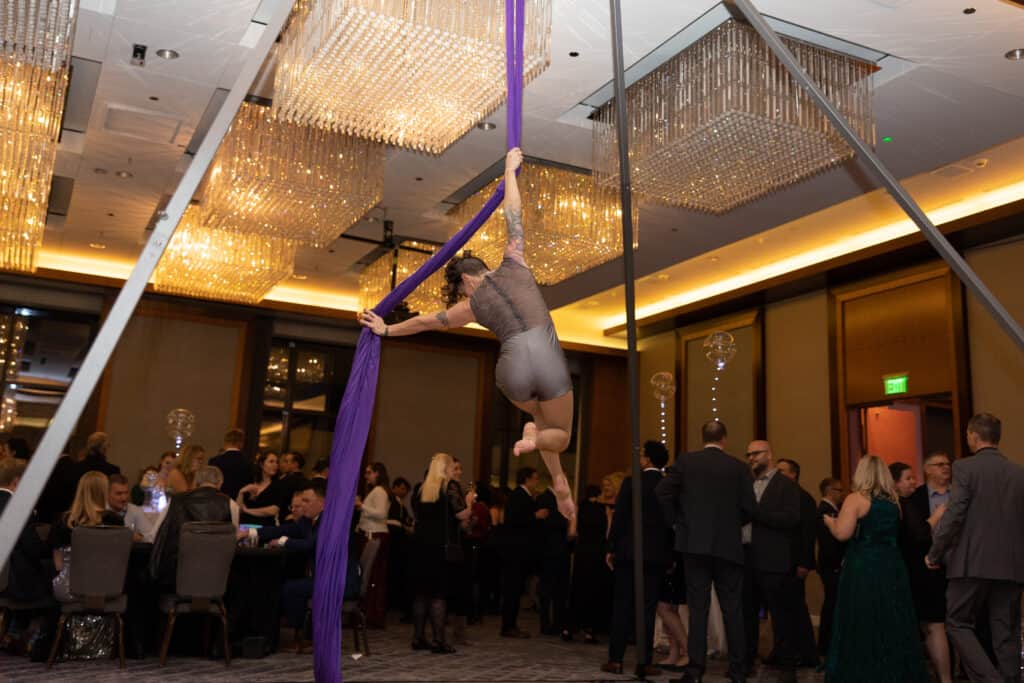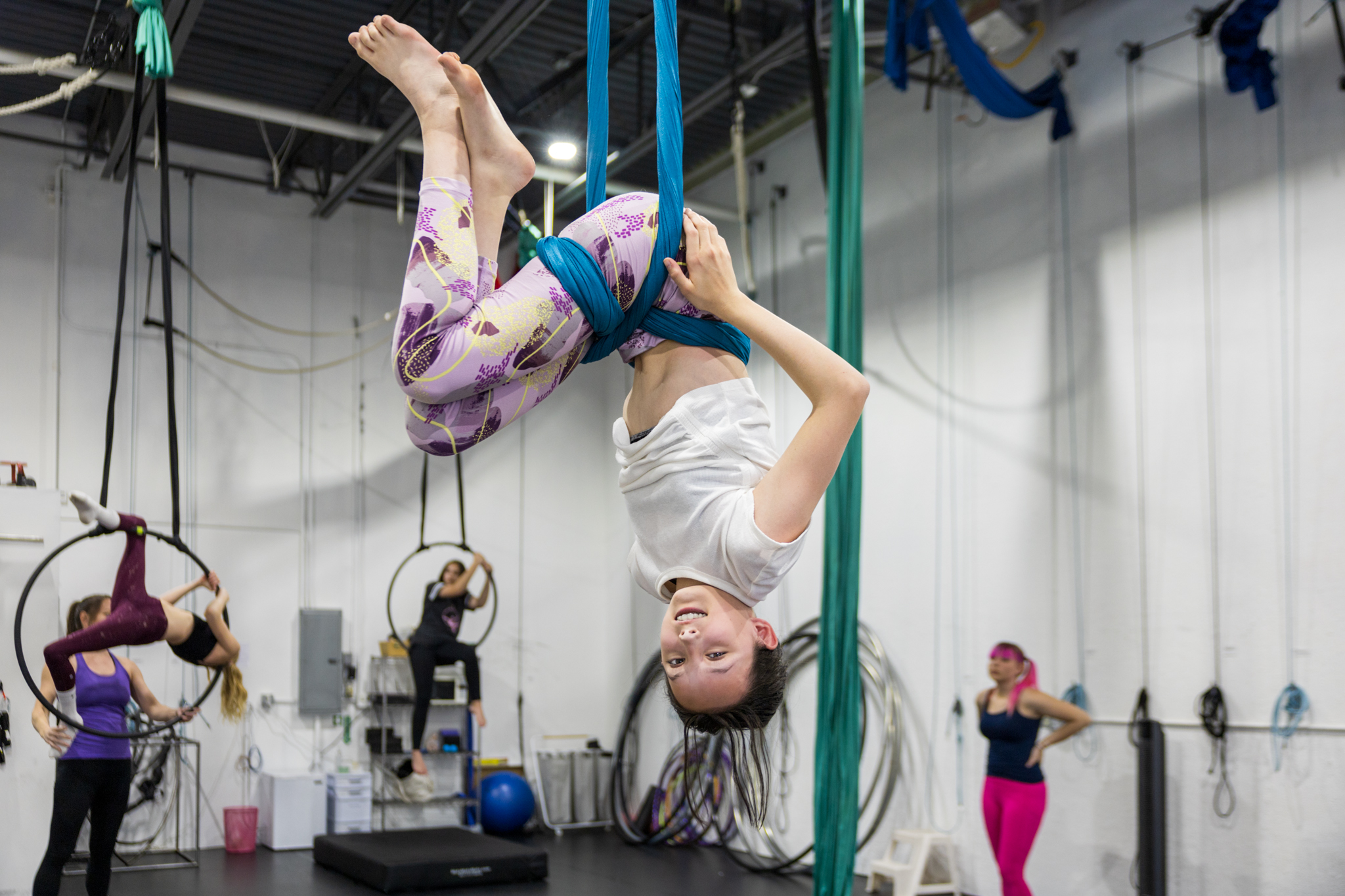Why Are Circus Performers So Expensive?
You’ve been delegated to plan the event. Maybe it’s a holiday corporate party, a fundraising gala, a grand opening of a hotel, or a wedding. To add ambiance and flair, you get a quote for aerial performers, a contortionist, or stilt walkers. The quote you receive is a couple thousand for a few aerial silk performers – talk about sticker shock!! Why are circus performers so expensive?! Read on for all the hidden costs of performing artists.
The Hidden Costs of Professional Performers
When you book a performer, you are paying for so much more than the entertainment you see that evening. There are “hidden costs” that most event planners know little about and don’t see at all. The time and money these hidden costs incur must be accounted for when booking a performing artist. As many event coordinators are unaware of all these hidden costs, the booking fees may seem exorbitant. However, once you understand all that goes into making the perfect performance event, the booking fees seem more reasonable. So, what exactly are you paying for when hiring a circus performer?
Training Time
Training time is the most influential cost associated with hiring a performing artist. Artists spend YEARS perfecting their craft to the point of being ready to perform. Their acts can take hundreds of hours to create, practice, and maintain. This is non-billable time, meaning, they don’t charge for training done months prior to prepare for an event.
As an extremely athletic endeavor, our circus artists at Aerial Cirque Over Denver train for at least 1-2 hours a day, 5-6 days a week. Unlike other artists, circus takes consistent training and practice time. Otherwise, muscle tone, strength, and flexibility are diminished. Additionally, there are costs associated with training time, as many artists pay to rent studio time or have their own space they pay rent for.
Preparation Time
Let’s walk through a typical event: Two circus performers meet at 3pm to pack and prepare their gear. At 4pm they drive to the venue for a 4:30pm load in and set up time. Set up takes 1 hour. Then they use an additional hour to complete their hair, make up, costume, and stretch.
In the case of some performers, like a contortionist, parts of this process take longer. A contortionist needs at least 1 hour of stretching time to be able to warm up their muscles sufficiently to perform their bendy act.
The event starts at 6:30pm and the entertainers perform for 2 hours, ending at 8:30pm. Tear down and load out takes an hour, then they drive home 30 minutes. The performers day ends at 10pm. Although you only saw the entertainers for 2 hours at the event, their day was 7 hours long! In general, you only see the performers for less than 1/3 of the time they worked your event!
Then, you have take into account additional hidden time. Occasionally, artists have to set up for an event early in the day, not right before the event, as the above example. In this case, their day is even longer. They may not be able to leave the equipment on-site and they certainly can’t work any additional jobs during that down time for added income.
Equipment and costumes
Depending on the act, proper and safe equipment can cost a performer thousands of dollars. For example, aerial performers need an aerial rig to set up their silks or other apparatus. These rigs run three to four thousand dollars. In the case of stilt walkers, the feet wear out over time, thus requiring frequent replacement, which is around $300 for each time. The synthetic ice used for our Ice Shows at Aerial Cirque Over Denver was a $5,000 investment. Equipment also needs to be regularly inspected and repaired for safety, which costs time and money.
Costumes are another expense for performers. Often, specific events have a color scheme or theme. Performers generally need to purchase costumes, hair accessories, tights, etc. to fit the theme of the event. On average, an economical costume and accessories can run $100-200, where a custom made costume can be upwards of $600.

Insurance
It is important for circus performers to be insured. Insurance protects the artist from any unforeseen events that may occur, such as damage to event premises. Insurance can run performers approximately $1,000 per year. It is particularly important for more risky acts, such as aerial performers or fire performers. This is a completely hidden cost that circus performers must account for that adds to the expensive booking costs.
Personnel
What you see during your event is the final outcome of a lot of front-loaded work, that often takes personnel who are paid by the performers. For example, an aerial rig takes 2-3 people to set up and tear down. These people are hired and paid an hourly rate of $50-75 dollars, which cuts into the performers bottom line.
Circus Performers are Expensive due to Hidden Costs
So, while a quote of thousands of dollars for a few performers might seem unreasonable, there are many reasons beyond artist profit for that expense. Ultimately, performing artists aren’t making the big bucks. They do it for the joy of art and creating something beautiful for your event!


